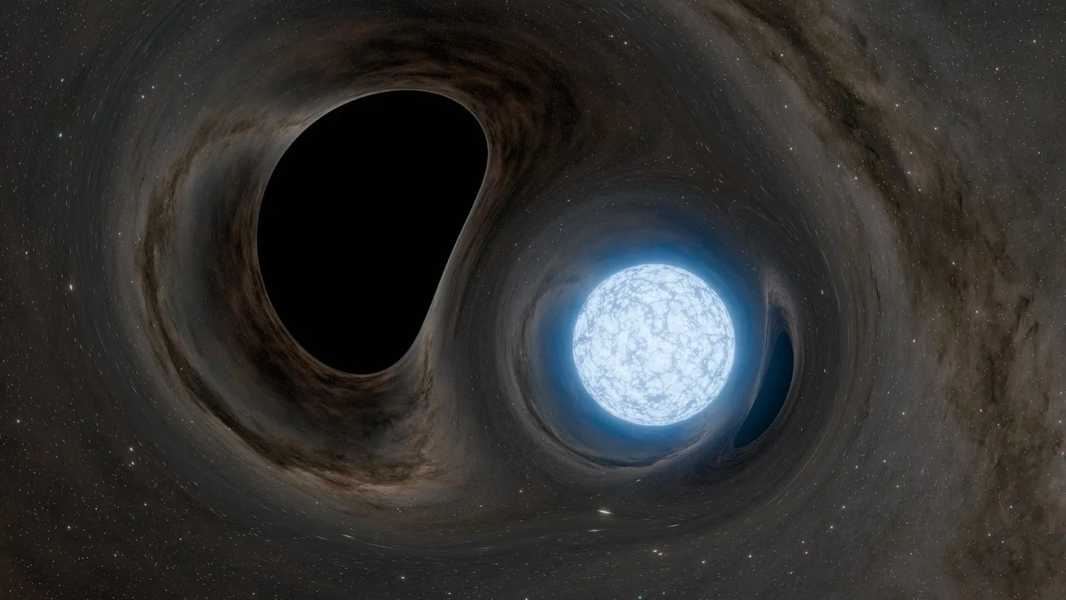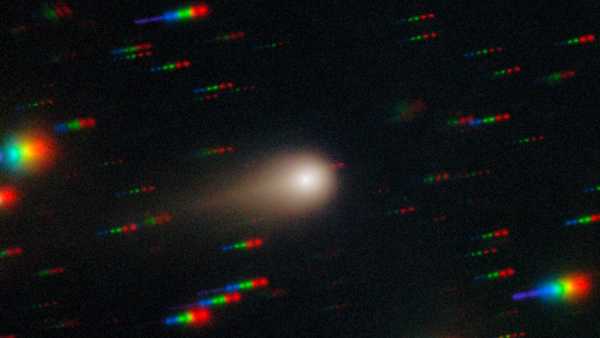
An artist's impression of a cracked neutron star orbiting a black hole. (Image credit: Caltech/R. Hurt (IPAC))
The universe is full of spectacular and violent events, but it's unlikely that anything could be more dramatic than a black hole tearing apart a star. Thanks to modern computer simulations, scientists have been able to study in detail what such a cosmic catastrophe might look like — and even what it might sound like.
A team of astronomers led by theoretical astrophysicist Elias Most of the California Institute of Technology (Caltech) has modeled the dramatic final milliseconds before a neutron star – the extremely dense core left over from a powerful stellar explosion – is swallowed by a black hole.
The results, published in The Astrophysical Journal Letters in March, suggest that in these final moments, the star’s surface cracks, like the earth during an earthquake. Just before the neutron star disappears into the black hole’s abyss, it unleashes some of the most powerful shock waves known to humanity, in a kind of violent, final farewell. The team’s work also predicts the kinds of signals this cosmic collision might send across space, signals that astronomers using telescopes on Earth and in space might one day be able to pick up.
You may like
- Newly 'awakened' black hole releases 100 times more energy than scientists have previously observed
- Extreme 'zombie star' that can rip human atoms apart is flying through the Milky Way – and no one knows where it came from
- Black holes can destroy planets — but they can also lead us to thriving alien worlds. Here's how.
“Before this simulation, people thought that a neutron star could be cracked like an egg, but no one had wondered whether the crack could be heard,” Most said in a statement. “Our work predicts that yes, you can hear or detect it as a radio signal.”
The simulations show that just before a neutron star is gobbled up, the black hole’s immense gravity shifts its surface, causing intense starquakes. This causes the star’s powerful magnetic field to wobble and twist, producing what astronomers call Alfvén waves. Then, just before the neutron star is gobbled up by the black hole, these waves explode into a powerful blast, emitting a burst of radio waves known as a fast radio burst (FRB). Caltech’s network of 2,000 radio dishes in Nevada may one day become sensitive enough to detect these final bursts, according to the statement.
Sourse: www.livescience.com





